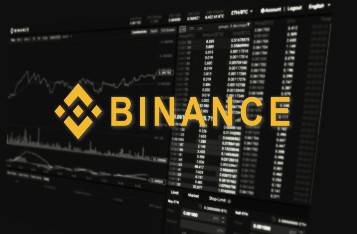The bachelor party decided to go to the casino. I happily went along for the ride. The behavioral finance nerd in me was ready to witness fascinating behavior. Gambling can certainly be entertaining, but it’s not financially savvy. As long as you know that, you’ll be ok – albeit a little lighter in the wallet.
This particular casino had an engaging “loss leader.”* They offered $15 in free casino credit to new gamblers. The scheme, of course, is cynical. They hope those free bets hook you, knowing that a regular gambler will surely lose back more than the free $15 over a long period of time.
*a strategy where a product is sold at a price below its market cost to stimulate other sales of more profitable goods or services.
And all it takes is one true addict to make up for hundreds of free giveaways. Like I said…cynical.
Most of our friends went to the blackjack table (where the per-hand odds are ~42% for the player, 50% for the house, and 8% ending in a tie), betting in their own cash on top of the free $15 credit.

My buddy, Trey, and I cheaped out. We took our $15 casino cards and went to the dollar slots. Let’s push some buttons and have free fun until the $15 disappears.
But we got lucky.
Trey turned his $15 into ~$80 of real money, and I left with ~$200. Our $30 in free credit became $300 real dollars. We counted our blessings and walked away. Appetizers are on us, fellas!
Meanwhile, the blackjack players ultimately played until their chips disappeared. They had fun but they lost their money. And yes – a few of them learned of our “success” at the slots and felt aggrieved by our dumb luck.
But if we look strictly at the financials, I see a clear takeaway:
Trey and I “played” in a way that was literally impossible to lose. As long as we didn’t succumb to any impulse to wager our own money, we had a 0% chance of losing. Granted, we got lucky to leave with gains. But we weren’t going to lose money. The blackjack guys played in a way guaranteed to lose, barring any luck. The more hands they played – each a bet with odds against them – the more likely their loss.It’s true – I’m not the most fun guy at the casino.

But implore you to apply a similar idea to your investing.
The Market Ain’t A Casino
First things first: the market isn’t a casino, and investing isn’t (or shouldn’t be) gambling.
I understand why it can feel that way, especially when we hear stories about GameStop, AMC, or Enron. Big bets, big wins, and big losses over short periods.

The market, as a whole, isn’t roulette, though. It simply represents the ownership of businesses—a small slice of the global economy that we each own. Owning a business is not the same as blind gambling. You’re not depending on dice or cards to fall your way.
Stock investing involves exchanging money today for the future income stream of a particular business. Or, in the case of a broad fund of stocks, the future income stream of the global economy. The economy doesn’t over- or under-perform based on dice or cards.
Investing in stocks – at least the way I implore us all to approach it – isn’t gambling.
Bets in the Market
But the stock market isn’t a guarantee, either. There will be times when we invest on Monday only to see our investments decline in value on Tuesday. In fact, the shorter our investment period, the more likely we’ll lose money.
I don’t want to play blackjack with my retirement. I don’t want to make coin-flip bets.
But the more the odds are in my favor, the more I’m willing to wager. In one of Berkshire Hathaway’s annual meetings, Warren Buffett says something akin to, “If you give me 5:7 odds, we’d be willing to wager a very large sum of money.”
FYI: That’s a ~58% chance of winning.
Personally, I don’t have enough extra money to make too many 58% bets. I’d much rather make 90% bets. Or even better, I’d rather bet with the casino’s money. I want to feel really sure that I’ll walk away a winner.
The longer you invest in the stock market, the more likely you’ll walk away with profits. That’s a wager I’m willing to make.

Some Bets I’m Willing to Make
As of writing this very sentence, the S&P 500 is at 5526.
Will the S&P 500 be higher or lower in one month? I don’t know, and I don’t care. I don’t want that bet.
Will the S&P hit 5626 (100 points up from now) before it hits 5426 (100 points down)? I don’t want that bet, either.
Both those bets—involving short periods and small changes (~2%) in the market—are too close to 50/50 bets. I’m not willing to take those odds. It’s too risky. That’s why, in my opinion, stock investing is inappropriate over short periods. One month, 6 months, even out a few years – stocks aren’t appropriate.
But will the S&P be higher or lower in 10 years? Or 20 years? Or more? I’m willing to make that bet, and it’s a sizable bet at that. I’ve got a lot of money on the line. I’m not sure it will pay off, but I like my odds.
Will the S&P hit 8300 (50% up from now) or 2750 (50% down)? I’m not sure. 50% declines do happen, but not too frequently. 50% increases are much more common. I’m an optimist on this one, too.

I care about long periods and steady compounded returns over those periods. The odds are clearly in the investor’s favor when looking at those time scales.
Those are some bets I’m willing to make.
Thank you for reading! If you enjoyed this article, join 8500+ subscribers who read my 2-minute weekly email, where I send you links to the smartest financial content I find online every week. You can read past newsletters before signing up.
-Jesse
Want to learn more about The Best Interest’s back story? Read here.
Looking for a great personal finance book, podcast, or other recommendation? Check out my favorites.
Was this post worth sharing? Click the buttons below to share!












 Bengali (Bangladesh) ·
Bengali (Bangladesh) ·  English (United States) ·
English (United States) ·